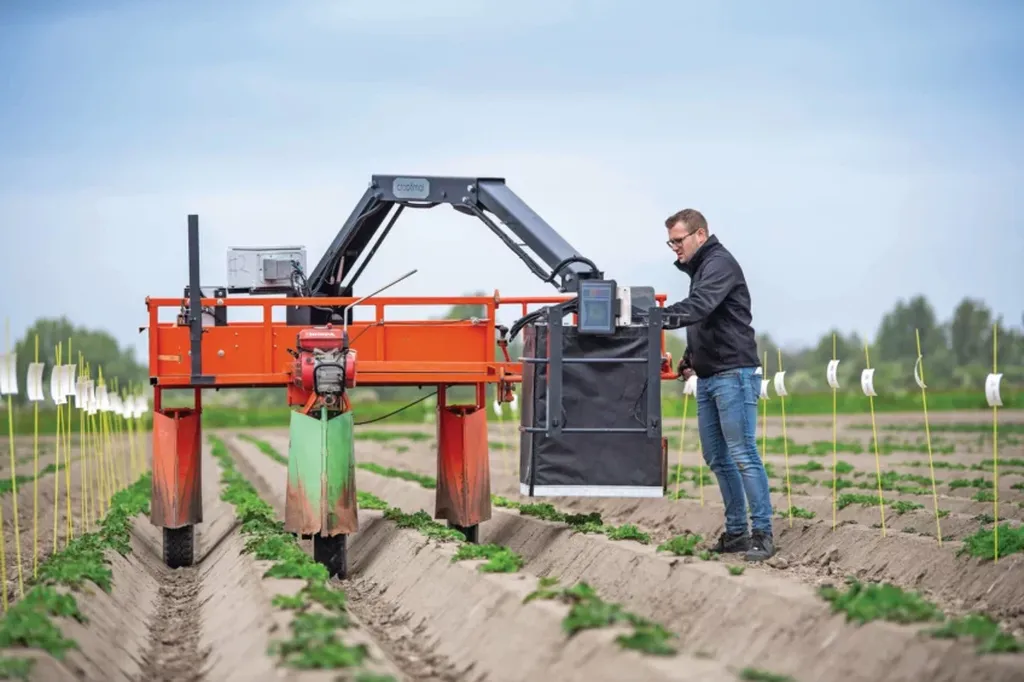In the heart of Zhejiang University, a team of researchers led by Yining Lyu has developed a groundbreaking robotic system that could revolutionize the potato farming industry. The system, detailed in a recent study published in *Smart Agricultural Technology*, addresses a long-standing challenge in automated seed potato sorting: the accurate detection and localization of buds, which are crucial for potato production.
The current manual sorting process is labor-intensive and prone to human error, leading to significant inefficiencies in the agriculture sector. Lyu’s team has tackled this issue head-on by integrating three RGB cameras, a dual-axis robotic manipulator, and a sophisticated control module. The system employs YOLOv11 combined with ByteTrack for real-time object detection and tracking, ensuring consistent identification of potatoes and their buds.
One of the standout features of this system is its two-stage ROI-guided detection framework, which uses foreground-optimized data augmentation to enhance the model’s sensitivity to small-bud features. This innovation is a game-changer for the agriculture industry, where precision is paramount. “The ability to detect small buds with high accuracy is crucial for ensuring the quality of seed potatoes,” Lyu explains. “Our system achieves a bud detection precision of 95.9%, which is a significant improvement over existing methods.”
The system also incorporates a monocular oblique-view spatial localization method based on geometric projection, achieving a mean localization error of just 2.73 ± 1.77 mm. This level of precision is essential for the efficient operation of the robotic manipulator, which synchronizes its motion with the conveyor dynamics to ensure real-time grasping. In field tests, the system demonstrated a sorting success rate of 97.05% on 374 seed potatoes, underscoring its reliability and operational effectiveness.
The commercial implications of this research are substantial. Automated seed potato sorting can significantly reduce labor costs and increase efficiency in the agriculture sector. As the global population continues to grow, the demand for food production is expected to rise, making technologies like Lyu’s system more important than ever. “This technology has the potential to transform the way we approach potato farming,” Lyu notes. “By automating the sorting process, we can improve the overall quality of seed potatoes and enhance the productivity of farms.”
The research conducted by Lyu and his team at the College of Biosystems Engineering and Food Science and the Zhejiang Key Laboratory of Intelligent Sensing and Robotics for Agriculture represents a significant step forward in the field of agricultural automation. As the technology continues to evolve, it is likely that we will see similar systems being deployed in other areas of agriculture, leading to a more efficient and sustainable food production system.
In the broader context, this research highlights the potential of integrating advanced robotics and artificial intelligence into agricultural practices. The success of Lyu’s system demonstrates that these technologies can be effectively applied to solve real-world problems in the agriculture sector, paving the way for future innovations. As we look to the future, the collaboration between agritech researchers and industry leaders will be crucial in driving the adoption of these technologies and shaping the future of agriculture.

